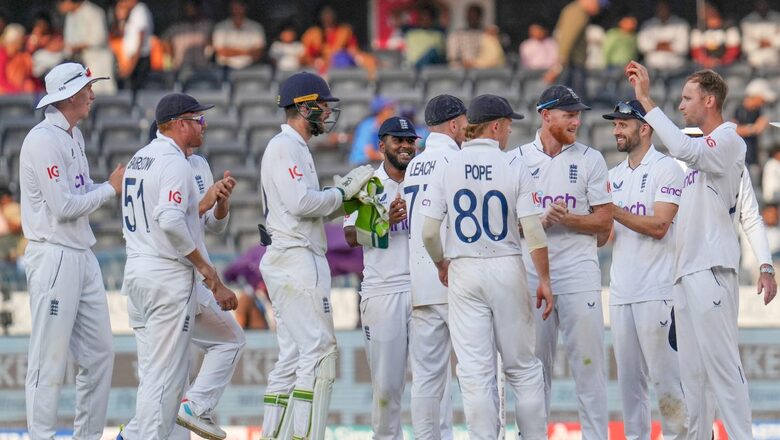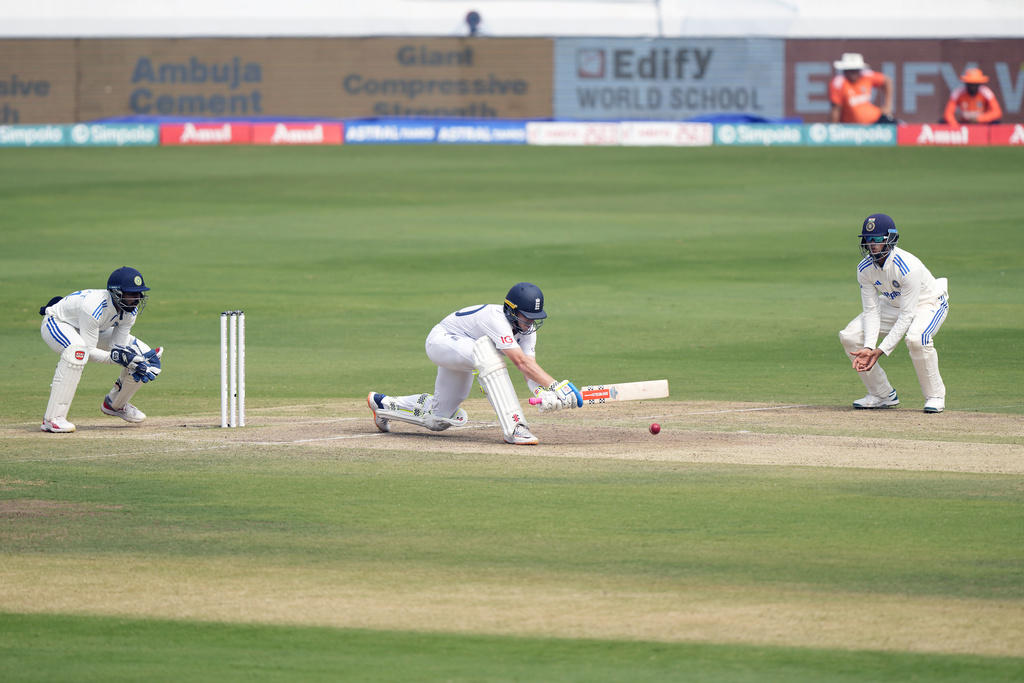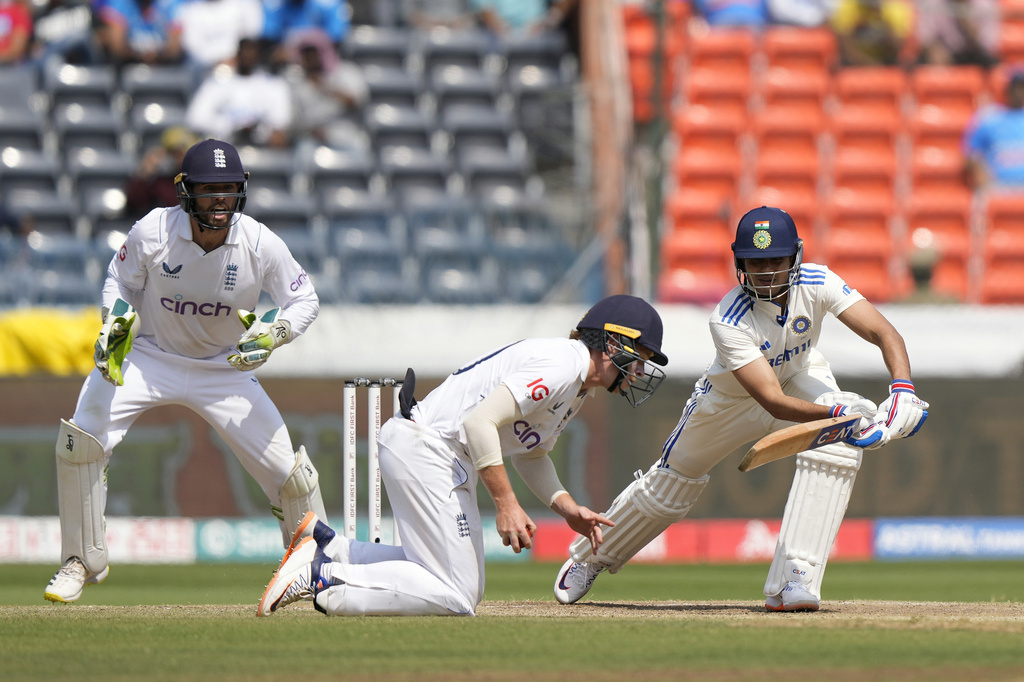
views
“Attack is the best form of defence”. And England attacked and attacked and pulled off one of the greatest heists on Indian shores in recent memory in Hyderabad to take a 1-0 lead in the five-match series. We may now call it ‘Bazball’ – but the concept, the philosophy about being proactive and putting pressure on the opposition has always been there. India, in the course of their 16-series winning streak, is not new to this. With tracks that assist spinners and three world-class operators of the craft, India have often attacked relentlessly and ground down their opponents repeatedly even before the visiting teams could realise what hit them.
Also Read: Sensational England Humble Mighty India
This happened to Australia at the start of the Border Gavaskar Trophy last year. In under six days of play in the series, they were 0-2 down – blindsided by the marauding Indian spinners and the spin-friendly tracks. Ahead of the England series, a larger sense was that it would go down similarly. And it did at least for the first two days. England were shot out for 246, India had taken a lead of 190. No team had beaten India in India after conceding that many runs as lead.
But in the 246, there were shades of this England team that their approach is going to be different. Ben Duckett and Zak Crawley started it off. In India, you generally play out the first hour of play when seamers get the most assistance and then set yourself in for the long haul against the barrage of spin. But the England openers looked to score in the first hour of play and by the time spinners were introduced, they had scored over 50 runs.
When the Forward Defence Made way to Sweep
A forward defence is generally the most employed shot for any batter against spinners in sub-continent conditions. Be compact with your defence against the good-length ball. A batter would take his/her front foot out to reach the pitch of the delivery, negate the spin and essentially blunt the good delivery out. But Duckett and Crawley would take out the sweep and reverse sweep to play that very good length delivery. And this is where England got the better of India in the opening round.

From a solid defensive shot that would be a dot, or utmost bring a single – if there are no closing-in fielders, England were milking runs with the sweep on either side of the wicket. This forced the Indian skipper Rohit Sharma to keep a deep point and to shore up the deep square. In the second innings, Duckett would similarly sweep his way to 47. Before the start of the series, Duckett, speaking to a UK media outlet, had said he has ten different variations of sweep shots he can score run-off. And he was not joking.
Enter Ollie Pope.
In the first innings, Pope, playing Test cricket after a lengthy injury layoff and with a mediocre average in Tests – more so abysmal in India – would prod forward five times in his 11-ball stay. The last of that prod would find the outside edge to slip. Talking about that dismissal, Pope said at the post-match conference, he was not too worried about it as he was happy to cover the inside edge of the bat.
Come the second dig, Pope was lunging forward far less and used the sweeps to good effect. Similar to Duckett’s strategy, what those sweep shots did to the Indian bowlers was that they could not bowl consistently at the good length area. The dip, the turn and the bounce are extracted best when the ball lands on that area, and the England batters were smothering that with the sweeps and scoring runs.
“Out there it could be as safe as a defence playing a reverse sweep or a sweep. And I think if we can keep sort of nailing that, then we get more bad balls as batters. If we can sort of hit their best ball for four with a reverse sweep, then that’s going to lead to more short balls, more half volleys, and that can open up the outfield,” Pope later revealed the gameplan.
The troika of Ashwin, Jadeja and Axar Patel could not stem the flow of runs. In the end, the duo of Jadeja and Ashwin leaked 413 runs in the Test, the most for them since 2017.
India’s Missed Opportunities with the Bat
But India still managed to bundle out England for 246 in the first innings and batted well to score 436. But that lead of 190 could very well have been 250 and England could have been out of the game then and there itself despite the special Ollie Pope innings. There was a sense that India should have added another 70-80 runs and killed the game.
England were rubbish with the ball in the first innings and Indian batters gifted their wicket away. Be it Yashasvi Jaiswal, who tried to go over short mid-off when the fielder was placed specifically for him to try that shot; or Rohit Sharma, who charged down to Jack Leach to sky one; or Shubman Gill, who in a bid to find that release shot hit one uppishly to short-mid; or Shreyas Iyer who picked out the only boundary rider with his slog sweep when on 35; or KL Rahul, who missed a half-tracker playing a tad too early to get holed out in the deep – all of those wickets were gifted to England bowlers.
“I thought we left probably 70 runs on the board in the first innings. I think in our first innings when conditions were pretty good to bat in on day two, I thought in those kind of situations, we got ourselves into some good starts and we didn’t really capitalize. We didn’t get 100. We didn’t get somebody getting a really big 100 for us. So in some ways in India, I think I just felt we left those 70, 80 runs back in the hut in the first innings,” India’s batting coach Rahul Dravid would go on to concede that Indian batters missed their opportunity.
Dravid did say the chase was going to be a tricky one, but what was baffling was how India went into a shell in the second innings. Jaiswal, who had debutant Tom Hartley’s number in the first innings, suddenly, changed tacks in the second innings. The pressure that he had applied on the debutant in the first innings was not replicated, and Hartley grew in confidence pitching the ball on the good length area and finding enough purchase to bother the Indian batters. Jaiswal finally decided to take on Hartley using his feet but seeing the batter advance, the left-arm spinner pulled back his length and Jasiwal could only nudge it to Pope at short leg. Gill, in terrible form, then lunged forward to a tossed-up delivery for a forward defence and got caught at silly point.
It seemed India had made up their mind that this was not going to be an easy shot and preserving their wicket seemed to be the plan. Rohit came forward to another good length delivery from Hartley, but not enough to cover the turn and was trapped.

From this point onwards it was apparent that India had the pressure of the chase on them. While England rode through the pressure with their sweeps, India used less of it. Not that India should have done more, but this is India we are talking about, home conditions, better players of spin who have an advanced repertoire of strokes to counter the spinners, but none of it was on display on Day 4. Rahul went back to a fullish delivery, and Iyer prodded at a loopy one he could have smothered towards mid-on.
Yes, Hartley, Rehan Ahmed and Jack Leach bowled well, but not that well to have India reeling at 119/7. Yes, the pitch was misbehaving, but it did not deteriorate that drastically for India batters to have little clue of what was happening,
In the end, it was England, with their proactive approach and a Pope special got the better of the Indian team who were put under kind of pressure and responded with a passive mindset and gameplay.




















Comments
0 comment